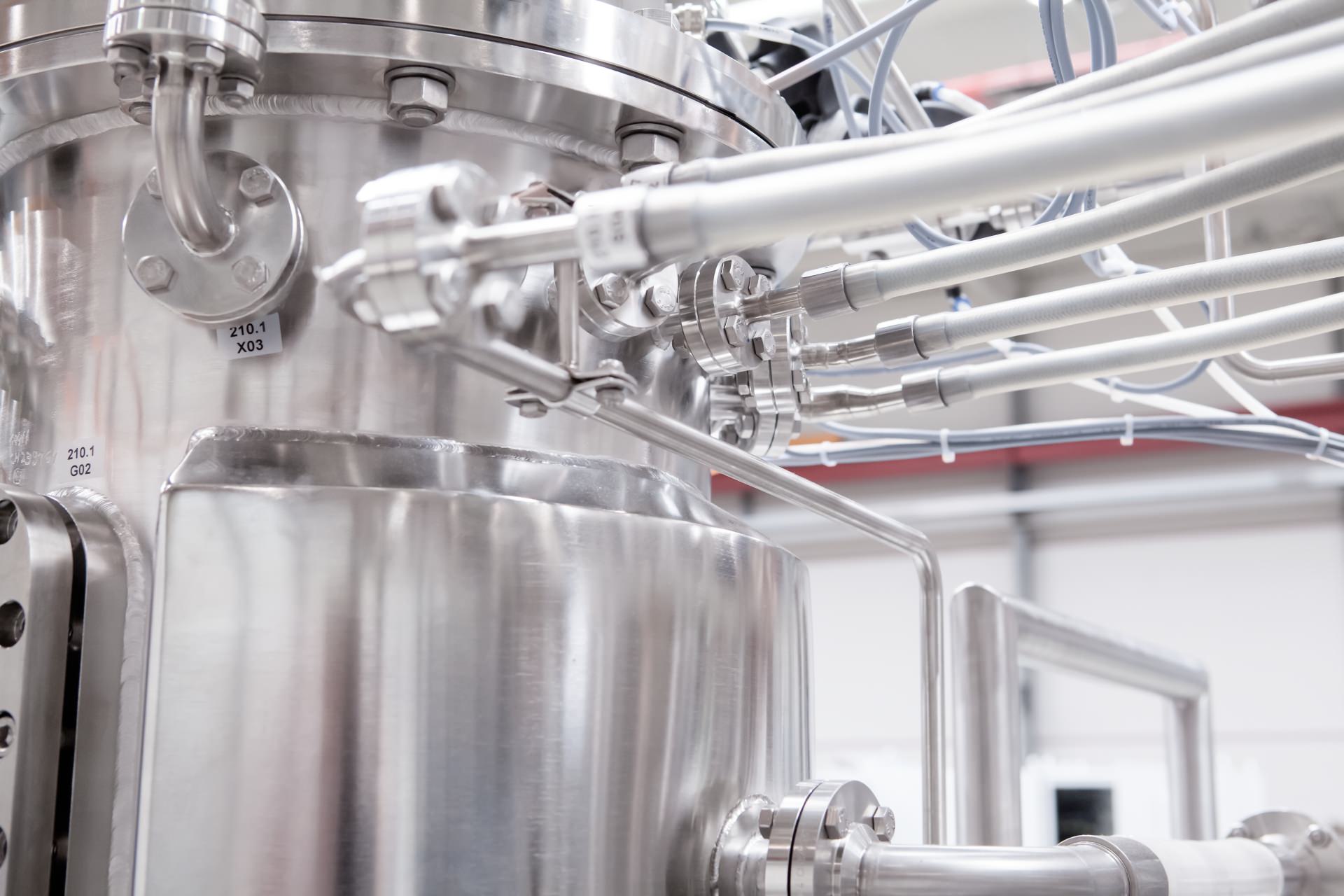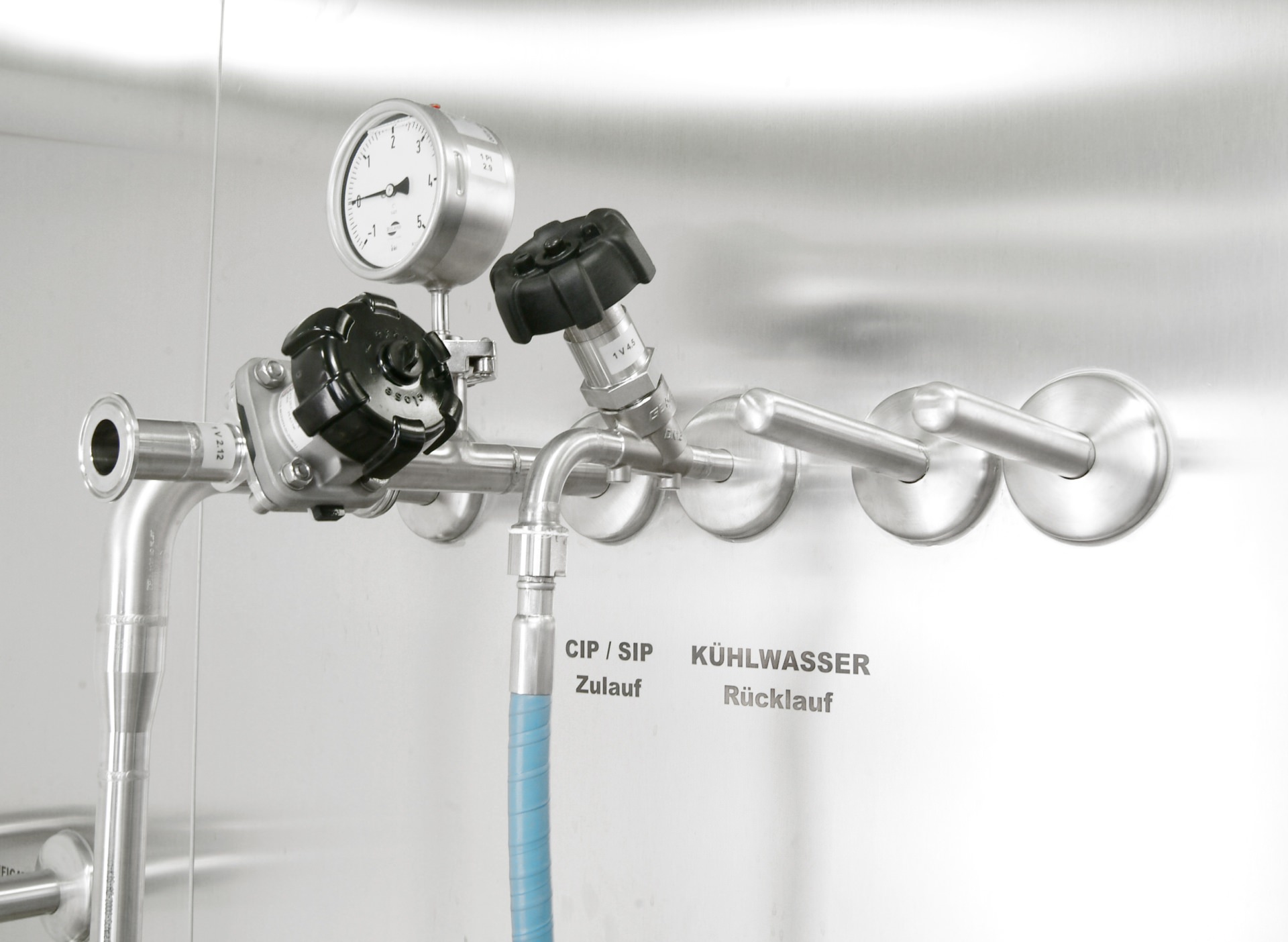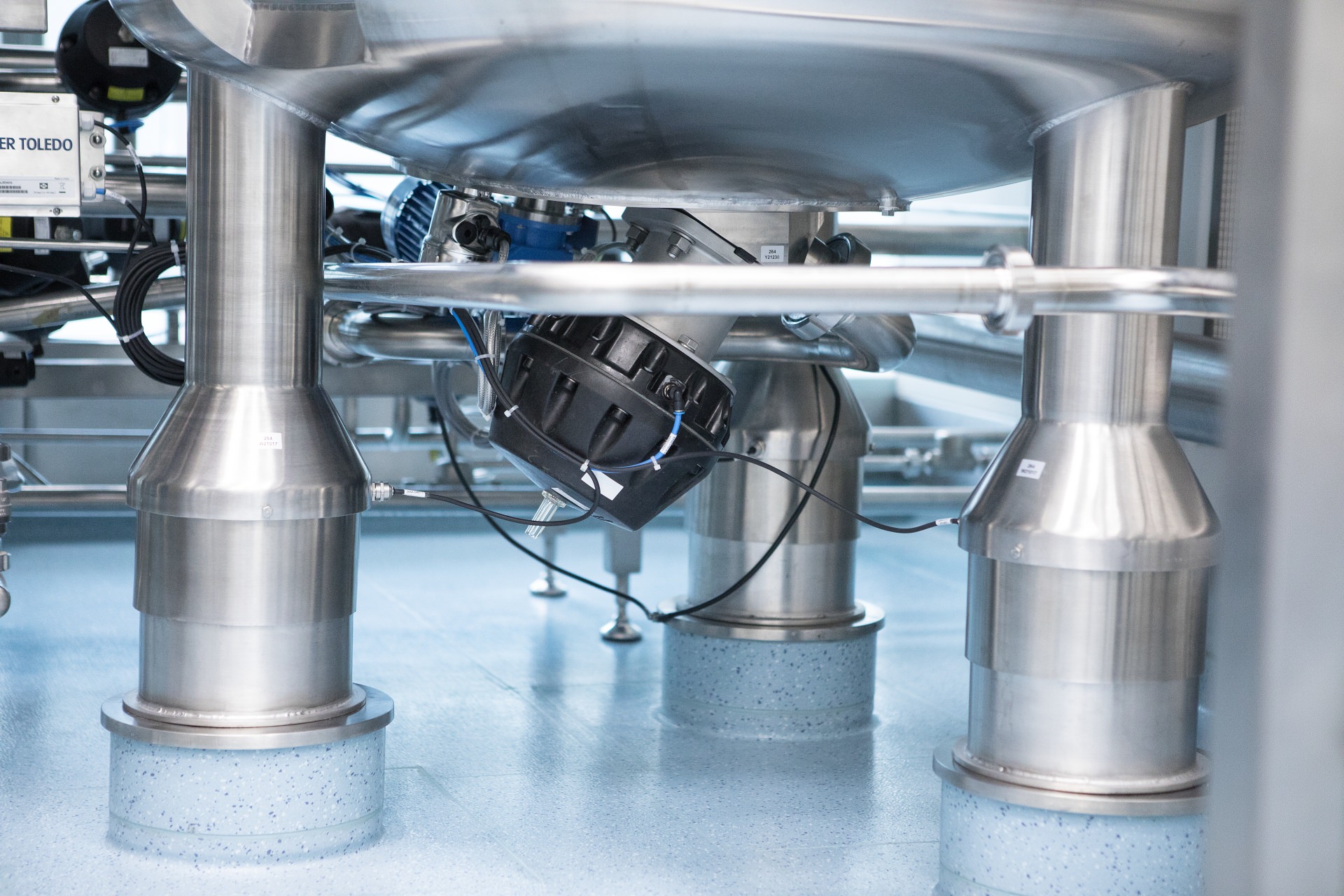
Hygienic design in the production of liquid products
High quality and product safety thanks to hygienic design
The German legislator sets clear guidelines at the Equipment and Product Safety Act (German: GPSG) to ensure product and health safety for the production of food and pharmaceutical products. The hygienic design of plants, machines and components is an important part to implement these specifications. Further, hygienic design is becoming increasingly important for the production of cosmetic products, at the biotechnology and the chemical industry. It makes high demands on the construction, the material and the surface of all plant components. At Ruland there is more to it than simply merging the components that are available on the market to a perfectly hygienic and functional process system. Thanks to our know how at the food and pharmaceutical industry, we are able to combine high plant efficiency with high operational safety. We pay attention to quick and effective cleanability at the process design. This way we are able to create tailor-made solutions for our customers who benefit from our many years of experience in the area of plant construction and aseptic processes at the hygienic design.
Hygienic design stands for avoiding contamination risks
Design, construction and the material are responsible for the hygienic condition
With our homogenous concept, we minimise the product contamination caused by deposits, penetration of foreign substances or microorganisms. Achieving optimal hygienic conditions at the process system and ensuring a hygienic production are the requirements for a hygienic design. For each customer we individually check the needed level of hygienic design for their system. Our construction team pays attention to surface quality, gaps, dead spaces and stream free zones, because there deposits might occur. We work with as few detachable connections as possible. With an endoscope, we ensure the quality of our welding seams. We mainly use stainless chromium-nickel steel to ensure that the material of the system and systems parts is inert. The technical characteristics of chromium-nickel steel stays stable at a wide spectrum of temperatures. We always adapt the alloy to our customers’ requirements. Our engineers not only take into account the metallic materials but also the used elastomers, e.g. for seals.

No hygienic design without system cleaning
Achieve optimal cleaning with Cleaning in Place (CIP) and other technologies
It is easy to clean and disinfect the Ruland process plants with the help of CIP systems or other cleaning equipment (SIP/Whirlwind) at the end of a production or a batch change. Thanks to the closed cleaning system within the plant, the plant is quickly ready for production again. Hygienic design also takes the immediate environment of the system into account. It is important to distinguish between open and closed processes. An easy cleaning of the external areas needs to be guaranteed. Every liquid should easily flow off containers, pipes and other spaces. The plant design prevents the entering of any liquid, organic substance or operating material.
Hygienic design also for automation elements
The system control monitors the hygienic process
We also select the electrical components and the control system according to the hygienic design. Products or other materials cannot enter the system. In a hygienic environment, an easy cleaning of the control cabinets is very important. Liquids must not accumulate at the control cabinets. An automation system continuously monitors the complete plant. Sensors and an intelligent control system always report the respective condition of the system. The control system documents the hygienic production status and ensures the traceability.

Service supports the hygienic design during plant operation
Thanks to regular maintenance, the system stays hygienic and clean
Already the design supports the maintenance work at plants that are constructed according to hygienic design. Each system part is thus easily accessible. This way, our service technicians can quickly remove, immediately clean and easily reinstall the plant parts. While servicing and maintenance, the technicians check each seal and replace defect parts directly. To ensure an impeccable feedback to the control system, they regularly control the measurement and control technology and recalibrate it if necessary. The technicians also check the system for possible leaks as well as the overall external plant condition. Thanks to their inspection and repair of noticeable patches, they ensure a smooth, hygienic system function for the ongoing process.
Do you want to learn more about hygienic design?
Various organisations provide advice and regulations
Numerous organisations offer guidebooks and information about hygienic design. You can find detailed information about it on the respective homepages. As a company member, Ruland is oriented towards the specifications of EHEDG (ehedg.org), the European Hygienic Engineering and Design Group. The directives from EHEDG are leading when it comes to hygienic design and they correspond to our demand for hygienic plant design. We furthermore meet the requirements of the FDA, GMP and ISPE for design, construction, choice of material and function of our systems. In addition, we consider country-specific standards and specifications. For further information, please contact our sales department (info@rulandec.com).
Please find all our information on hygienic design in our focus folder Hygienic Design.
